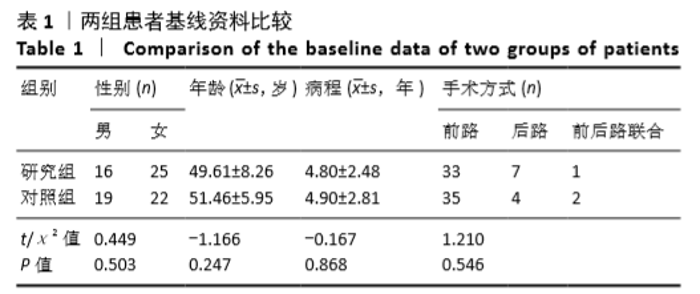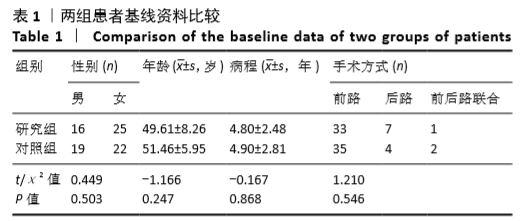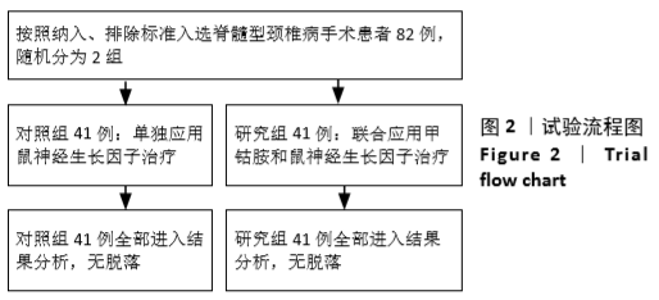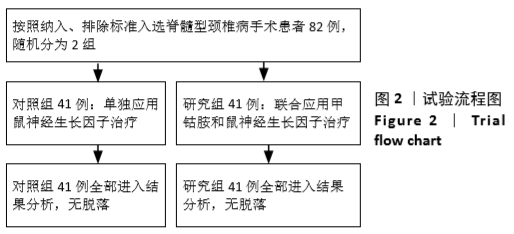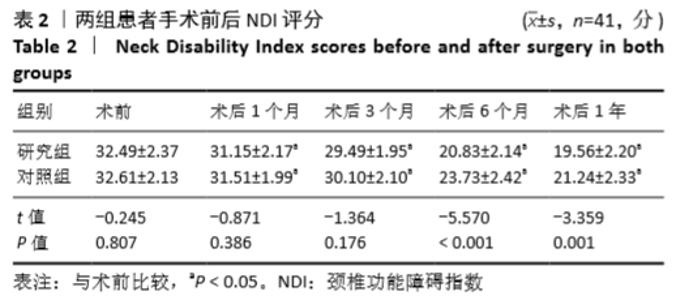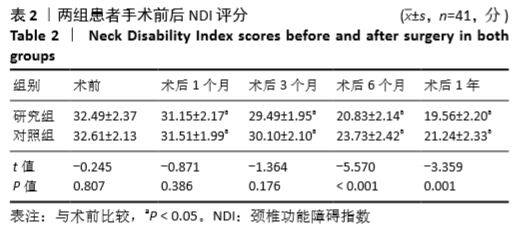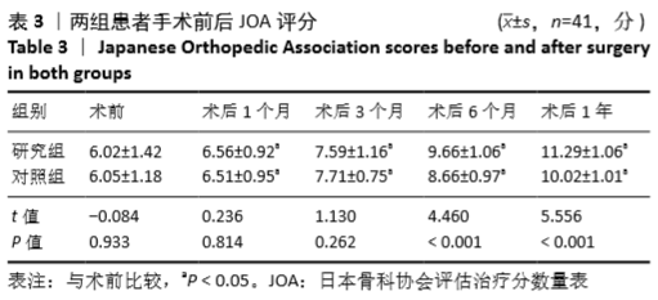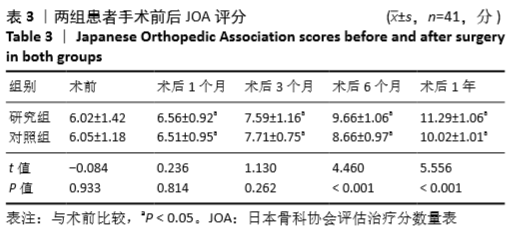[1] RYU WHA, PLATT A, DEUTSCH H. Hybrid decompression and reconstruction technique for cervical spondylotic myelopathy: case series and review of the literature. J Spine Surg. 2020;6(1):181-195.
[2] NORI S, SHIRAISHI T, AOYAMA R. Comparison between muscle-preserving selective laminectomy and laminoplasty for multilevel cervical spondylotic myelopathy. Ann Transl Med. 2020;8(5):160.
[3] LEBL DR, HUGHES A, CAMMISA FP Jr, et al. Cervical spondylotic myelopathy: pathophysiology, clinical presentation, and treatment. HSS J. 2011;7(2): 170-178.
[4] BAKHSHESHIAN J, MEHTA VA, LIU JC. Current Diagnosis and Management of Cervical Spondylotic Myelopathy. Global Spine J. 2017;7(6):572-586.
[5] FOUYAS IP, STATHAM PF, SANDERCOCK PA. Cochrane review on the role of surgery in cervical spondylotic radiculomyelopathy. Spine (Phila Pa 1976). 2002;27(7):736-747.
[6] FLECK SK, LANGNER S, ROSENSTENGEL C, et al. 3-Tesla Kinematic MRI of the Cervical Spine for Evaluation of Adjacent Level Disease After Monosegmental Anterior Cervical Discectomy and Arthroplasty: Results of 2-Year Follow-Up. Spine (Phila Pa 1976). 2017;42(4):224-231.
[7] KATO S, OSHIMA Y, OKA H, et al. Comparison of the Japanese Orthopaedic Association (JOA) score and modified JOA (mJOA) score for the assessment of cervical myelopathy: a multicenter observational study. PLoS One. 2015; 10(4):e0123022.
[8] GUEST JR, FRIEDMAN S, WOODS DD, et al. A methyl analogue of cobamide coenzyme in relation to methionine synthesis by bacteria. Nature. 1962;195: 340-342.
[9] ZHANG D, YANG W, WANG C, et al. Methylcobalamin-Loaded PLCL Conduits Facilitate the Peripheral Nerve Regeneration. Macromol Biosci. 2020;20(3): e1900382.
[10] ANDRUNIÓW T, LODOWSKI P, GARABATO BD, et al. The role of spin-orbit coupling in the photolysis of methylcobalamin. J Chem Phys. 2016;144(12): 124305.
[11] TEFFERI A, PRUTHI RK. The biochemical basis of cobalamin deficiency. Mayo Clin Proc. 1994;69(2):181-186.
[12] ZHANG M, HAN W, HU S, et al. Methylcobalamin: a potential vitamin of pain killer. Neural Plast. 2013;2013:424651.
[13] LIU SY, LIU SZ, LI Y, et al. Mouse Nerve Growth Factor Facilitates the Growth of Interspinal Schwannoma Cells by Activating NGF Receptors. J Korean Neurosurg Soc. 2019;62(6):626-634.
[14] GAO L, GE R, XIE G, et al. Hearing Improvement in A/J Mice via the Mouse Nerve Growth Factor. Clin Exp Otorhinolaryngol. 2017;10(4):303-308.
[15] WILD KD, BIAN D, ZHU D, et al. Antibodies to nerve growth factor reverse established tactile allodynia in rodent models of neuropathic pain without tolerance. J Pharmacol Exp Ther. 2007;322(1):282-287.
[16] KARADIMAS SK, GATZOUNIS G, FEHLINGS MG. Pathobiology of cervical spondylotic myelopathy. Eur Spine J. 2015;24 Suppl 2:132-138.
[17] LEBL DR, BONO CM. Update on the Diagnosis and Management of Cervical Spondylotic Myelopathy. J Am Acad Orthop Surg. 2015;23(11):648-660.
[18] SADASIVAN KK, REDDY RP, ALBRIGHT JA. The natural history of cervical spondylotic myelopathy. Yale J Biol Med. 1993;66(3):235-242.
[19] CHANG V, HOLLY LT. Controversies in the management of cervical spondylotic myelopathy. J Neurosurg Sci. 2013;57(3):241-252.
[20] KADANKA Z, MARES M, BEDNANÍK J, et al. Approaches to spondylotic cervical myelopathy: conservative versus surgical results in a 3-year follow-up study. Spine (Phila Pa 1976). 2002;27(20):2205-2210.
[21] BANERJEE R, RAGSDALE SW. The many faces of vitamin B12: catalysis by cobalamin-dependent enzymes. Annu Rev Biochem. 2003;72:209-247.
[22] JIANG DQ, XU LC, JIANG LL, et al. Fasudil combined with methylcobalamin or lipoic acid can improve the nerve conduction velocity in patients with diabetic peripheral neuropathy: A meta-analysis. Medicine (Baltimore). 2018;97(27):e11390.
[23] OKADA K, TANAKA H, TEMPORIN K, et al. Akt/mammalian target of rapamycin signaling pathway regulates neurite outgrowth in cerebellar granule neurons stimulated by methylcobalamin. Neurosci Lett. 2011; 495(3):201-204.
[24] 胡韶楠,顾玉东,王欢,等.弥可保对周围神经再生作用的临床研究[J].中华手外科杂志,1999,15(1): 34-35.
[25] WANG Q, ZHAO H, ZHENG T, et al. Otoprotective effects of mouse nerve growth factor in DBA/2J mice with early-onset progressive hearing loss. J Neurosci Res. 2017;95(10):1937-1950.
[26] 訾英,刘欣伟,李哲,等.应用鼠神经生长因子修复周围神经损伤对骨质疏松的影响[J].中国组织工程研究, 2014, 18(51): 8233-8237.
[27] 吴芳芳,楚胜华,马延斌,等.神经生长因子治疗重型颅脑损伤的临床观察[J].中华神经医学杂志,2010,9(2): 190-192.
[28] 黄侠,李秋明.鼠神经生长因子治疗外伤性视神经病变的临床观察[J].神经损伤与功能重建,2010,5(6): 433-435.
[29] 林红,姜允琦,李超,等.鼠神经生长因子联合甲钴胺治疗合并足下垂的腰椎间盘突出症[J].中华神经医学杂志, 2013,12(9): 936-939.
[30] 杨波,李京.鼠神经生长因子联合甲钴胺治疗慢性乙醇中毒性周围神经病疗效观察[J].山东医药, 2015, 55(38): 38-39. |
